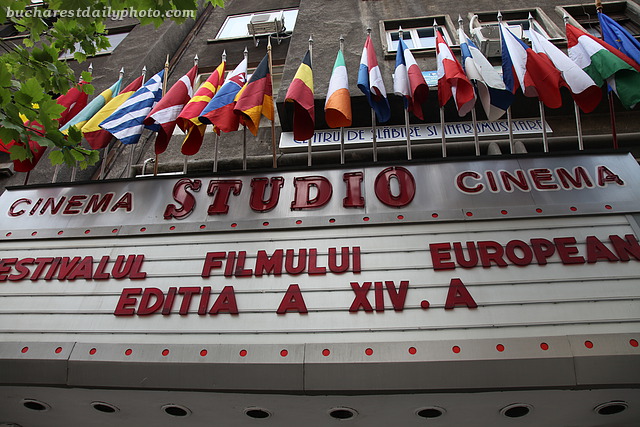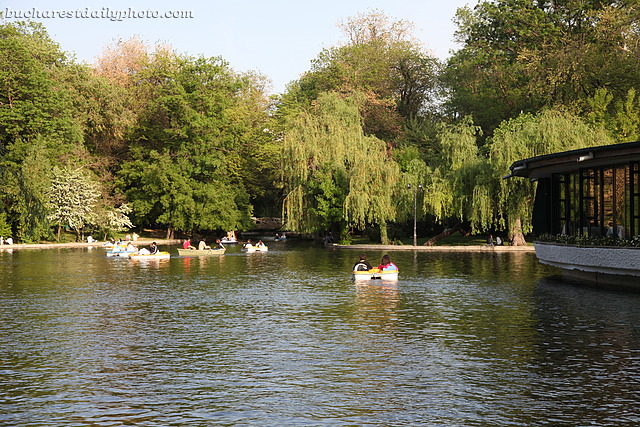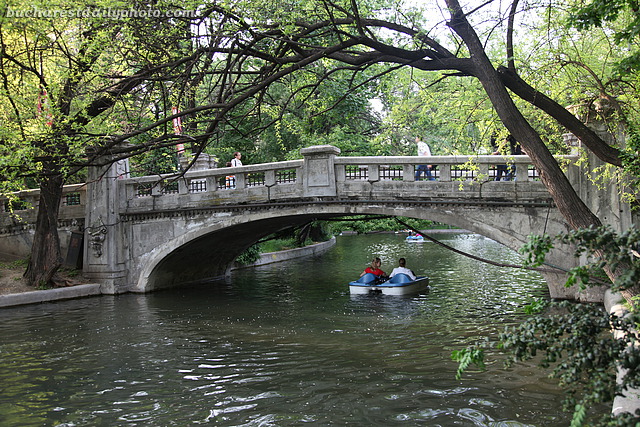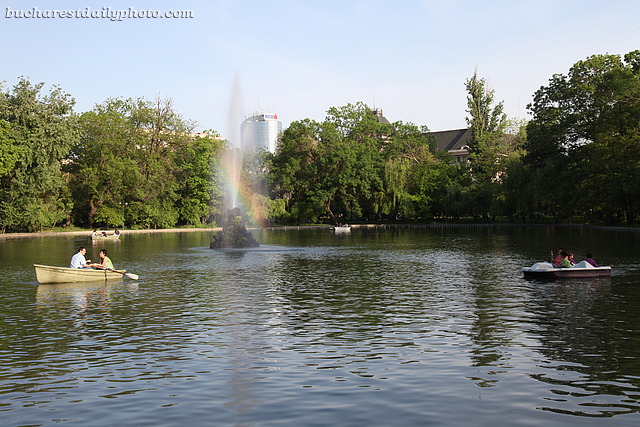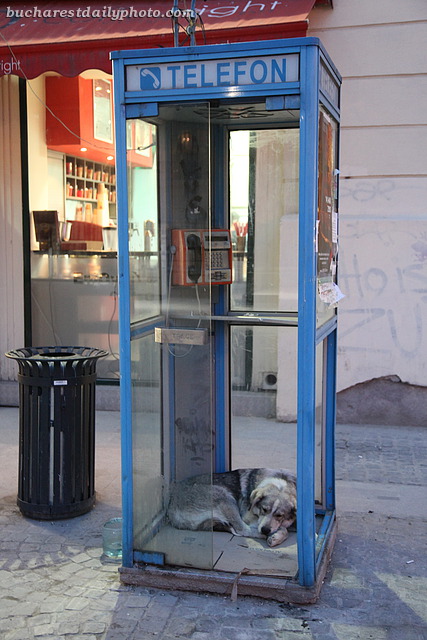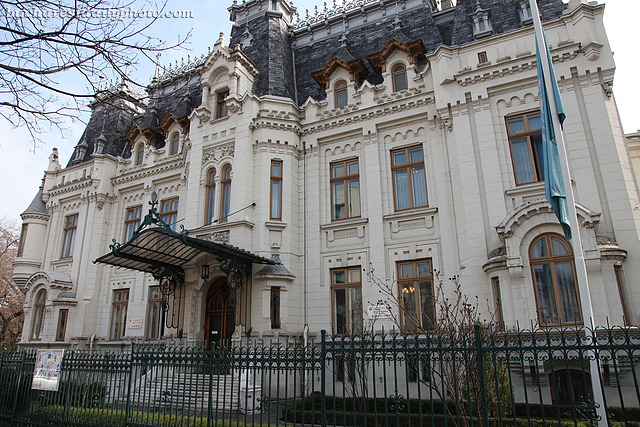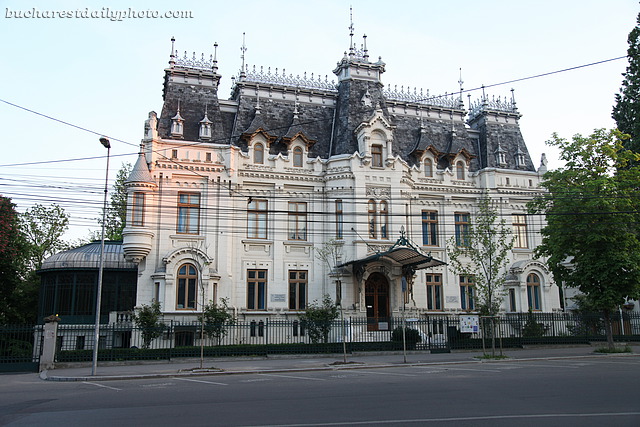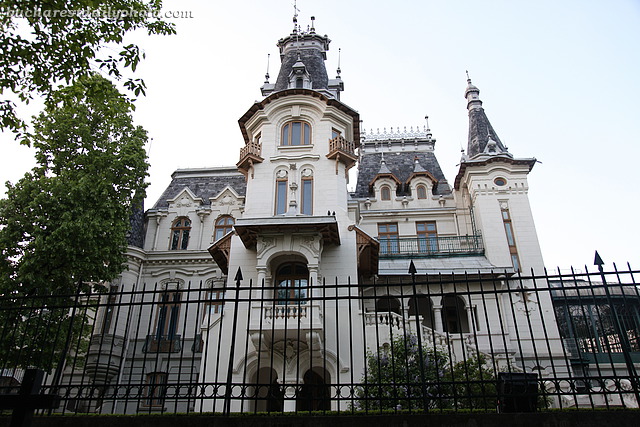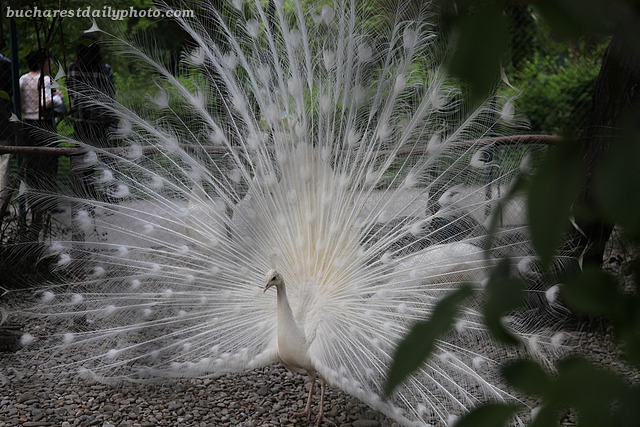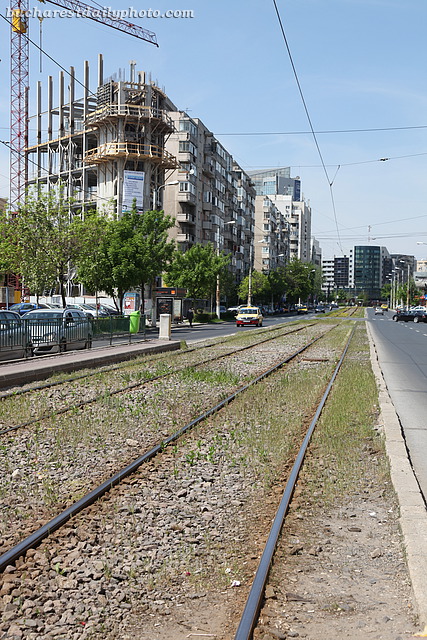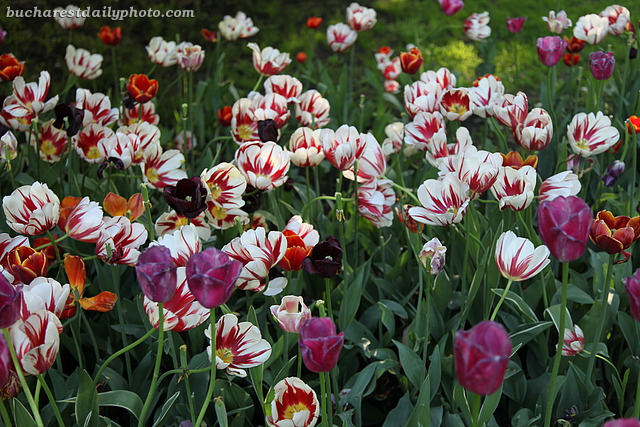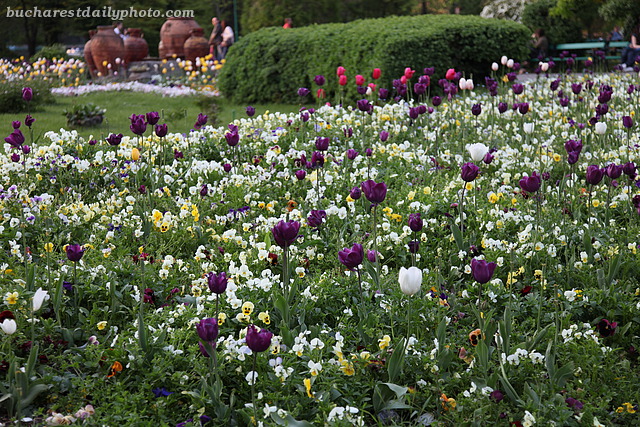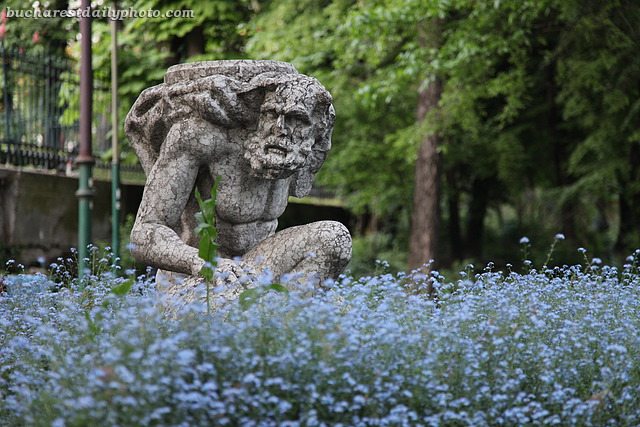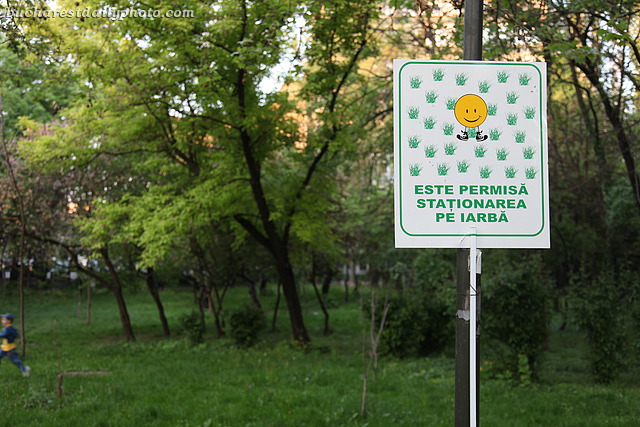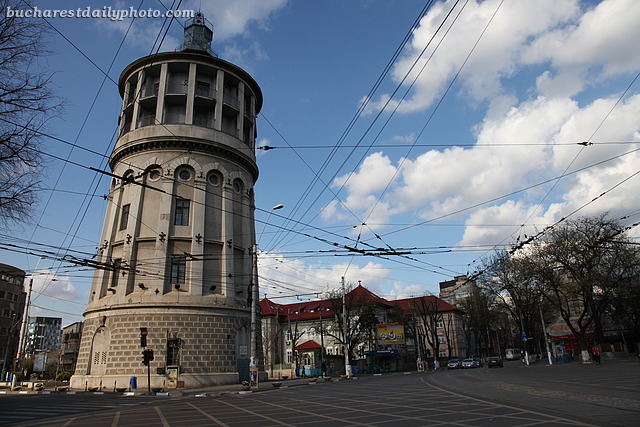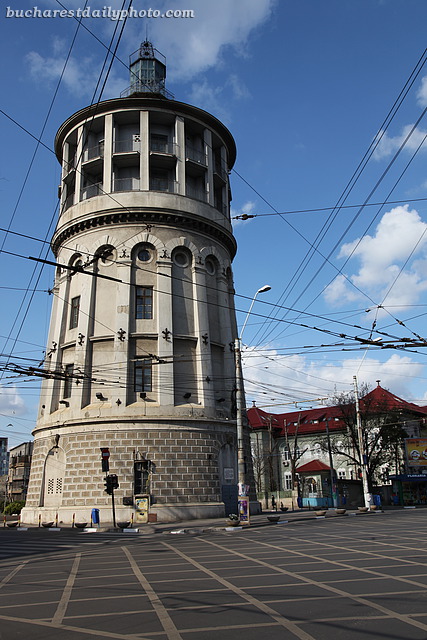There’s a simple reason why this cinema has so many flags displayed above its entrance. The European Film Festival had just started in Bucharest. Movie goers are in for a treat: more than 50 European movies to choose from, all from the last two years.
It was brought to my attention that even though I posted numerous photos from Cişmigiu Park here on the blog, I’ve never shown you the nicest attraction in the park, more exactly the artificial lake. During the winter the lake is without water and part of it turns into an ice skating rink but from spring to autumn the lake is filled with water and one can hire boats to row on the lake.
The beautiful palace which is the subject of today’s photo was built in 1902-1906 as a residence for Elena Kretzulescu (aka Elena Creţulescu) by architect Petre Antonescu (1873-1965). It replaced the old family house, which was built around 1718. The palace’s facade is aligned with Ştirbei Vodă Street while the back looms over Cişmigiu Park from a small hill. Purchased in 1927 by city hall, the building was used for various purposes: from 1928-1929 it housed the office of the Prime Minister, followed by the Museum of Religious Art which was closed in 1946 when the communists came to power. Since 1972 the palace has been the seat of UNESCO European Centre for Higher Education. As with many other palaces in Bucharest the architectural style is Eclectic with touches of French Renaissance, which was very much in fashion in Bucharest at the end the 19th century.
The back of the palace seen from Cişmigiu park:
The exotic birds are back in Cişmigiu Park, including this beautiful white peacock which seemed to be the center of attention when I passed by.
More proof that Bucharest is really green these days: even the tramway rails are starting to grow.
If I were to choose I would say that Bucharest looks at its best in the spring. It’s sunny and warm but not hot enough to feel like the asphalt is melting. But above all I like spring here because it’s all green again: green trees, green grass (still 🙂 ) and the city is full of flowers. I don’t usually photograph flowers but I couldn’t help taking a few shots of the tulips. The city is full of them and they look absolutely lovely.
Today is Theme Day at the City Daily Photo community, a monthly event that happens the first day of every month, when all participating blogs will post a picture that relates to the theme day’s description. Today’s theme is: Statues. Click here to view thumbnails for all participants
I had great plans for this theme day. I was to go and photograph some statues that would fit in both with theme day and with the May Day aka International Workers’ Day (which celebrates the legal establishment of the 8-hour working day, something that we today hold as a given but which wasn’t always so). I know a few statues in Bucharest that can be used to express both these ideas. But … I got stuck in the house with a bad cold so instead of what I planned I’m giving you Atlas, sitting among flowers in Cişmigiu Park. The only thing I’m not sure about is if this qualifies as a statue or it’s better defined as a sculpture.
One of the stupid ideas inherited from the communist regime was that never ever, in any circumstances, one is allowed to step on the grass in a public park. From my childhood I remember that any strip of green grass had a sign on it saying “Don’t step on the grass!”, sometimes with the smaller addition “Fine xxx (some ammount that my parents were not prepared to pay) lei”. After 1989, when Romanians were finally allowed to own a passport and I got to see the world outside my country I was puzzled to find out that most corners of the world don’t have this policing of the grass. First time I stepped on the grass in a park I felt a bit guilty and I asked myself why is it OK to do this in other countries and why is it not OK in Romania? But some things change with time and last summer I’ve read in the press that from now on the citizens of Bucharest will be allowed to step, sit, loiter, etc on the grass in public parks. To be honest I didn’t really believe it to be true. Yet, lo and behold, to my surprise, Cişmigiu Park is full of signs like the one in today’s photograph, reading “It is allowed to step on the grass” (it’s an approximate translation, since the verb used doesn’t translate directly into English). I guess I lived to see the day 🙂
The watchtower in today’s photo was used in the old times as an observation tower by the city’s firemen. Back then, the 42 meters (137,7 feet) tall tower was the highest structure in the city. It was built in 1890-1892 after plans by architect George Mandrea, to replace the old fire tower, Colţei Tower, demolished two years earlier in 1888. The tower was also supposed to serve as a water reservoir in case of fire, being equipped with a reservoir and a metal frame in the upper section. The problem was that after finishing the structure they realized that the water pumps of the local water utility company did not have enough power to fill the tower with water. This problem was solved in 1924 with the inauguration of a new water plant but by that time it was no longer necessary as the city’s water network had been developed. The fire brigade remained in the building until 1935, even though starting with 1910 the use of a tall building was made obsolete by the introduction of the telephone. The building served different purposes until 1963 when it became the Firefighters Museum.
